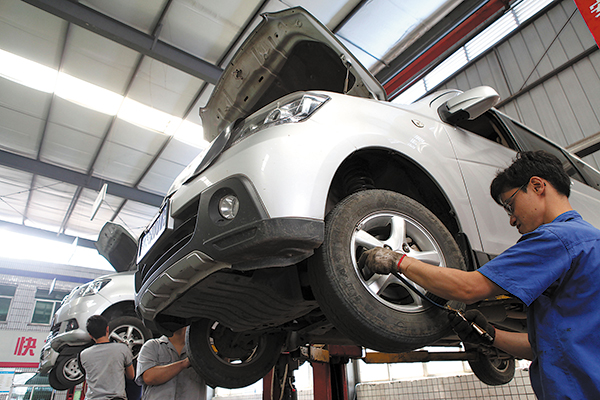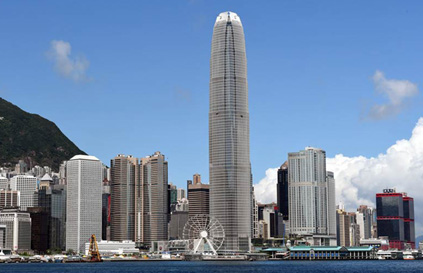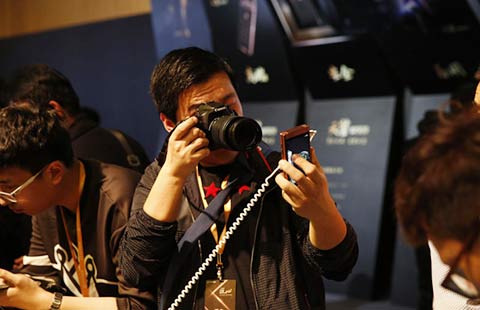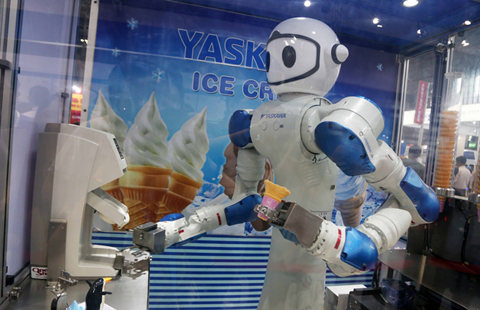New scheme aims to become model of fairness
By Hao Yan (China Daily) Updated: 2016-07-11 07:24
 |
|
Mechanics work on cars at a repair workshop in Yongchuan, Chongqing municipality. [Photo/China Daily] |
Cost of spare parts will determine how much drivers pay for their insurance premiums
The costs of spare parts for certain car brands could hit their expansion in the Chinese market, as the country's auto insurers introduced an adjustment that will result in higher premiums being charged to drivers of certain models. The change kicks in this month.
The adjustment factor features an insurance premium coefficient, which refers to the ratio of the total cost of a vehicle's parts over its retail price, to reflect the varying repair costs among different models. Models with a higher ratio will incur higher costs for repairing or replacing their parts.
The new coefficients have been jointly established by the Insurance Association of China and the China Automotive Maintenance and Repair Trade Association, with the aim of ensuring a fairer system. The adjustment factor will be revised every six months.
The previous car insurance system, which calculated premiums and compensation largely on the basis of a model's retail price, meant that Chinese customers were regularly hit by high charges for spare parts for certain models, as the cost exceeded the insurance coverage.
"Industry associations have worked together to ensure that buyers will be able to buy a car with their eyes fully open," said Wang Guojun, an insurance professor at the University of International Business and Economics in Beijing.
"The repairing and maintenance costs of a car model can vary greatly, but car owners often don't realize this until their vehicles require parts or repairs.
"By applying the terms of the new insurance scheme, a buyer can see the difference in premiums for different models and work out potential future costs. He or she will likely choose a car with lower repair costs and, by extension, a lower insurance premium."
The associations' data also showed the average total parts price for cars is between 200 to 300 percent of the purchase price, although some are only around 160 percent. Earlier media reports found the average ratio of the total cost of spare parts over the price of a new car is 300 percent in mature markets overseas.
Among the 12 models with a ratio above 500 percent, FAW Mazda's 6 sedan 2-liter automatic is the only volume brand model. Its ratio reached 557.08 percent. By contrast, the similarly priced Dongfeng Yueda Kia K5 2-liter manual GL has a ratio of 164.93 percent.
The Loss Damage Waiver, which covers repairs due to accidents, is 1,732 yuan ($259) a year for the Mazda 6, while the Kia K5's annual LDW is only 1,409 yuan.
"Luxury brand owners will notice a significant rise in their premiums," said Wang. "And the extra money the owner needs to spend every year will dictate his or her future behavior. Owners will learn their lessons and vote with their feet to find models with relatively low-priced spare parts."
To offset the current national trend for slower growth, some car manufacturers have lowered their retail prices in a challenge to competitors, while still making huge profits from spare parts.
Customers, however, were unaware of these high charges until their cars required repairs or replacement parts.
One German luxury brand charged so much for genuine parts that the total parts price of a sedan model was more than 12 times the unit price.
Despite lowering the price of its spare parts last year, the brand still topped the market in terms of price, with the ratio of one of its Sport Utility Vehicle models standing at 870 percent, while the ratio of other models ranged from 484 to 784 percent, according to the associations' data that was released in April.
Liu Jia, the German luxury brand car owner in her 30s, said: "I did not consider the cost of repair and maintenance before I bought the car. I did not care about the expense at the time, and now I have to look at my options."
"Other brands and models in the same class could be a good choice for me in future in case of a big rise," she continued, after being told about the rise in insurance premiums owing to the high cost of spare parts.
There could be a big jump in insurance premiums for some ultra luxury car brands, and owners could sell such models and avoid the brand next time, according to Wu Xiuyuan, senior business development manager at The Warranty Group Repair Services (Shanghai) Co.
Wu said: "It could be a heavy blow. Of course, owners prefer to save rather than spend, but they might not be fully aware of how car prices factor into the overall cost of maintaining a vehicle."
On the other hand, the new scheme with its adjustment factor could motivate insurers to accept deals for more luxury cars, as the increased income from premiums will raise profit margins.
In the past, many insurers were reluctant to insure luxury car models, especially sports cars, due to the high repair costs. Insurers struggled to break even when insuring luxury car models, and even lost money, as the previous scheme failed to take future costs into consideration.
Wang pointed out that the earlier scheme calculated lower compensation payments than the actual costs incurred on those models, and the more those deals were made the more money the insurer lost.
"The scheme has now been corrected to reflect the true situation," Wang added. "Insurers deserve to charge higher premiums for models that are more expensive to repair."
- China's mobile manufacturers quickly catching up with big names
- Chinese vice premier urges trade competitiveness improvement
- China remains top buyer of US real estate
- Mild inflation creates room to boost economy
- Service robot for elderly promising
- G20 economies to improve global trade governance: Statement
- Mavericks face Skepticism
- Problems put brakes on Tesla's bid market


















